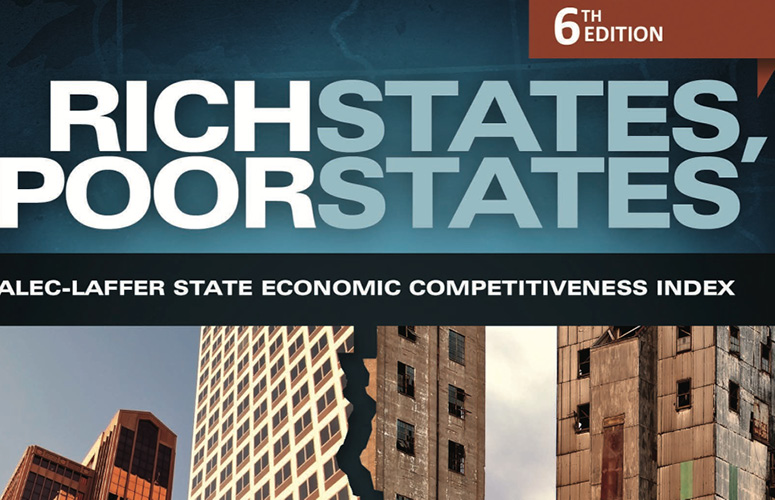Ohio makes significant jump in rankings, but still needs improvement in annual rich state, poor states report
May 23, 2013
The American Legislative Exchange (ALEC) has just released its annual “Rich States, Poor States” report, in which it ranks all 50 states economic prospects. Ohio has seen some serious improvement moving from 37 to 26 since last year’s report. However, the report also echoes key themes Buckeye has been discussing for years: the need for further tax reform and the need to become a Right to Work state.
The annual report is written each year by Dr. Arthur Laffer, of “Laffer Curve” fame, Stephen Moore, the founder of the Club for Growth, and ALEC’s Jonathan Williams, who runs the Center for State Fiscal Reform. It looks through a variety of policies that each state maintains in order to determine the states’ relative economic outlook. These include 15 variables:
- Highest Marginal Personal Income Tax Rate
- Highest Marginal Corporate Income Tax Rate
- Personal Income Tax Progressivity
- Property Tax Burden
- Sales Tax Burden
- Tax Burden from All Remaining Taxes
- Estate/Inheritance Tax (Yes or No)
- Recently Legislated Tax Policy Changes (Over the past two years)
- Debt Service as a Share of Tax Revenue
- Public Employees per 1,000 Residents
- Quality of State Legal System
- Workers’ Compensation Costs
- State Minimum Wage
- Right-to-Work State (Yes or No)
- Tax or Expenditure Limits
Looking at the decade between 2001 and 2011, the report echoes Buckeye’s Ohio by the Numbers reports by showing that the state was ranked 49th in economic performance and saw a 370,201 person loss in absolute domestic migration, for which Ohio ranked a dismal 45th.
With respect to the 15 variables, Ohio’s outlook, fortunately, looks better than its relatively recent past. Ohio’s corporate income tax ranks 5th, it finally eliminated the estate tax, and it ranks in the top half of states with respect to property tax and sales tax burdens, debt service as a share of tax revenue, public employees per 10,000 residents, average worker’s compensation costs, and tax expenditure limits.
Unsurprisingly, echoing Buckeye’s long-standing critiques, Ohio’s ranking took a significant hit by virtue of not being a Right to Work state, because of its a high minimum wage (earning a rank of 42), and because the state still has one of the highest top marginal rates for personal income tax as well as one of the more progressive income taxes (with 9 brackets).
If Ohio could deal comprehensively with its tax system and its labor challenges, the sky could actually be the limit. However, until it does so, Ohio will improve at a slower rate and risks falling back into a deeper hole the next time there is a recession or national economic dislocation.

